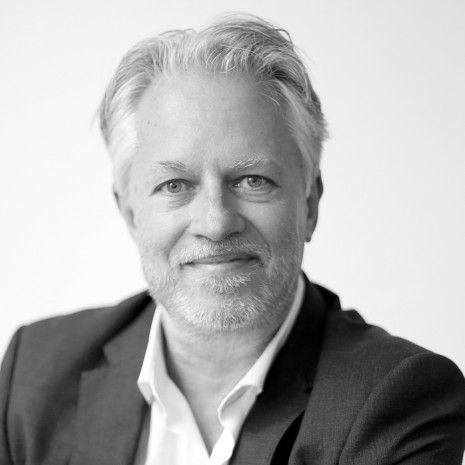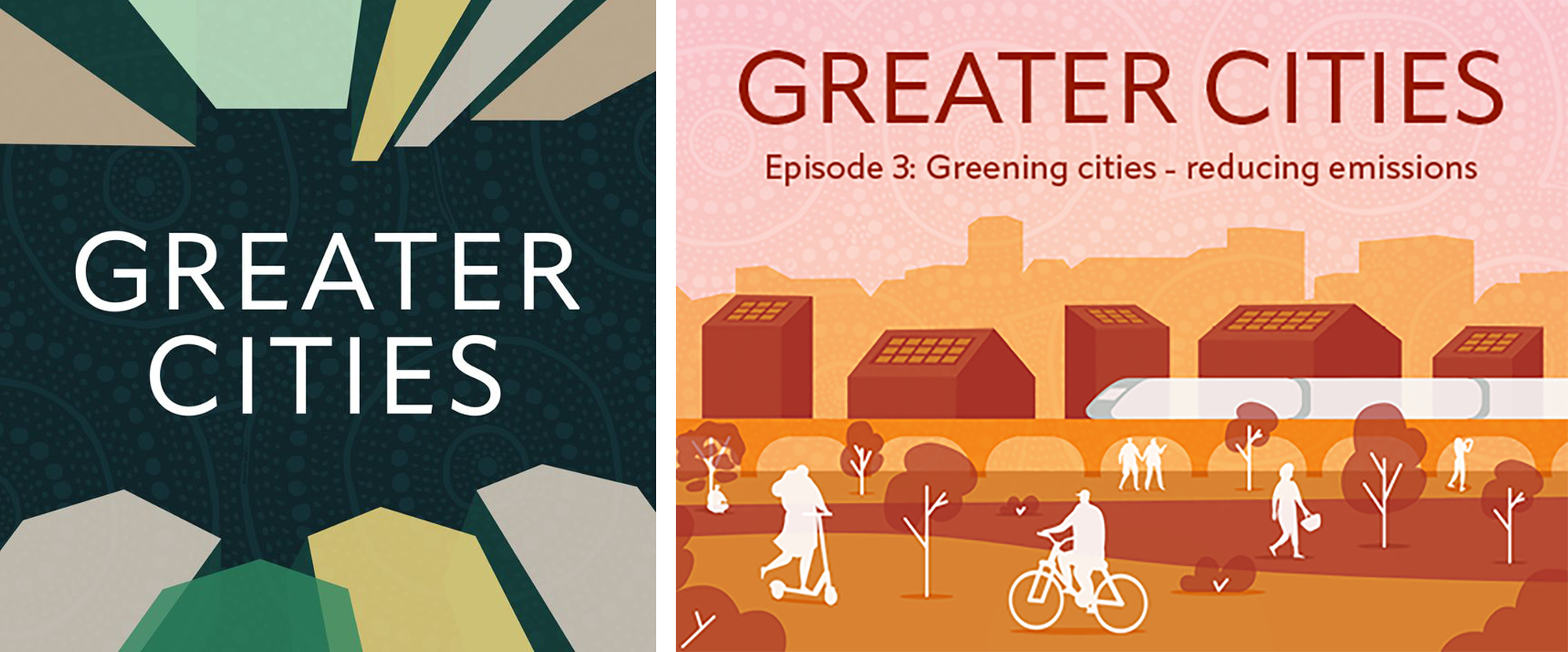
Craig Kerslake
As an architect and proud Wiradjuri man, Craig draws upon his cultural heritage, community and knowledge of Country. He fosters this way of knowing and doing across the team, bringing…
‘Greater Cities‘ is a podcast series about the future of cities. Each episode challenges listeners to look at the big issues facing our cities, with insights from leading thinkers from Australia and around the world.

Episode 3 talks about sustainable cities—the pressing need to adapt to our changing climate and how reducing emissions is critical to our future. Australian and international experts discuss the roadmap to net zero emissions and highlight innovative case studies that are already reducing our cities’ impacts. Nguluway DesignInc Director Craig Kerslake discusses the connection with and responsibility for Country within First Nations cultures. He posits that looking after the people, nature and environment is a core part of First Nations—it is a relationship of belonging and reciprocity where sustainability is assumed.
Here is an extract from the conversation between Craig Kerslake and Dr Wendy Were:
Dr Wendy Were: Here in Australia, we have much to learn from the wisdom of First Nations peoples who have lived on this continent for tens of thousands of years while caring for Country.
Craig Kerslake: Designing with Country or designing from Country is about relationship. It’s a relationship that you personally have with other people, so bringing people together in a neighbourhood sense, but also in a truly indigenous way.
Dr Wendy Were: That was Craig Kerslake, Managing Director of Sydney-based design firm Nguluway DesignInc. We’ll be hearing from Craig throughout the episode.
Craig Kerslake: It’s all about connecting neighbourhoods to the natural world in which we live, and that triangle, if you like – self, community, and nature – is what we call ‘belonging to Country’.
Belonging to Country is essentially about that relationship and it comes with responsibility. So if your neighbour’s not okay, she’s part of Country, you are not okay. And if the river is polluted, then you are also not okay. So that it’s about being connected in the first place. And if you’re connected, it’s intuitive that you will look after all the things in Country, including people.
So if your neighbour’s not okay, she’s part of Country, you are not okay. And if the river is polluted, then you are also not okay. So that it’s about being connected in the first place. And if you’re connected, it’s intuitive that you will look after all the things in Country, including people.
Craig Kerslake,
Director, Nguluway DesignInc
It’s a beautiful system, and it’s not my intellectual property. It’s thousands of years old and it’s what elders have always taught me is this idea, this concept, and it’s got so many different sophisticated layers to it, and a big part of that is ‘taming the inner emu’ we call in some mobs. It’s that the narcissist doesn’t take over.
Dr Wendy Were: This gift of knowledge and experience in caring for both Country and community is immense. It’s the accumulated wisdom of many centuries with inbuilt systems thinking, recognising the interconnectedness that is often ignored in Western ways of thinking. Non-indigenous Australia has started to wake up and understand that these old ways are one of the keys to our future success. It’s now time to apply this knowledge to how we live and to our built and natural environment.
…
Craig Kerslake: Carbon neutrality is obvious. I don’t have to ask people in indigenous communities, should we have photovoltaics on the roof of the building? Of course. Why wouldn’t you put that on there? It’s like they’re almost slapping me with, it’s an insult to even ask that question.
…
Dr Wendy Were: At one end of the spectrum, levers like the Australian Construction Code are critical for setting building standards, and at the other we are only limited by our imagination.
Craig Kerslake talks about what it means for cities and designs to belong to Country.
Craig Kerslake: How can built form actually be an extension of the human experience and how can it actually itself belong to Country? How can a road belong to Country? What happens to that water that runs off it? Is it dirty or is it clean? What’s, how do we celebrate water sensitive urban design?
How can built form actually be an extension of the human experience and how can it actually itself belong to Country? How can a road belong to Country? What happens to that water that runs off it? Is it dirty or is it clean? What’s, how do we celebrate water sensitive urban design?
Craig Kerslake,
Director, Nguluway DesignInc
We’re working on something that is about this idea of custodial architecture, whereas the built environment actually is a custodian of the landscape. And it’s, it emulates that indigenous thinking of being a custodian, so has to look after people and nature. It’s responsibility, and then applying totemic architecture to it. These concepts I’ve just made up based on aboriginal culture.
And totemic architecture, what we’re doing with that is applying specific relationships so it might be a township belongs to a river or it belongs to a mountain range, or it belongs to a coastal environment, or a particular animal, and it creates habitat for that animal, for example. Or if it belongs to the river, it needs to clean and make sure the river is okay. This thinking is really powerful in guiding all design, really.
Listen to the podcast episode here.